Are you facing a situation where you notice water pooling under your sink without any visible source of the leak? This can be a challenging problem to solve as it usually indicates an issue with the drain system. If left unattended, it could lead to further damage and costly repairs.
Thankfully, there are some steps you can take to try and identify the cause of the water buildup and fix it before it becomes a bigger issue. In this article, we’ll provide useful tips on how to diagnose and repair water under your sink without any visible leaks.
Brief Summary
Finding water pooled under the sink but no visible leak can be puzzling. Start by confirming all water sources are off and there are no obvious drips. Run a tissue over all surfaces to detect dampness. Perform tests on the faucet and drain to check for flows. Inspect connections for rust or debris. Common causes are drain clogs, supply line issues, worn washers or seals, and condensation. A clogged P-trap is a frequent culprit. Fixes involve tightening fittings, replacing damaged parts, clearing obstructions, and insulating pipes. For slow seepage, examine plumbing for loose spots and deterioration. Adjust any leaky valves or connections. If the faucet drips, inspect and replace worn components. Condensation forms with temperature fluctuations – insulation helps. Persistent moisture may indicate roof leaks. Isolating the source is crucial. Knowledge of sink components helps pinpoint the problem area. Addressing water accumulation prevents long-term damage, even if minor. With diligent inspection and targeted repairs, wet spots under sinks can be remedied.
Diagnosing The Problem
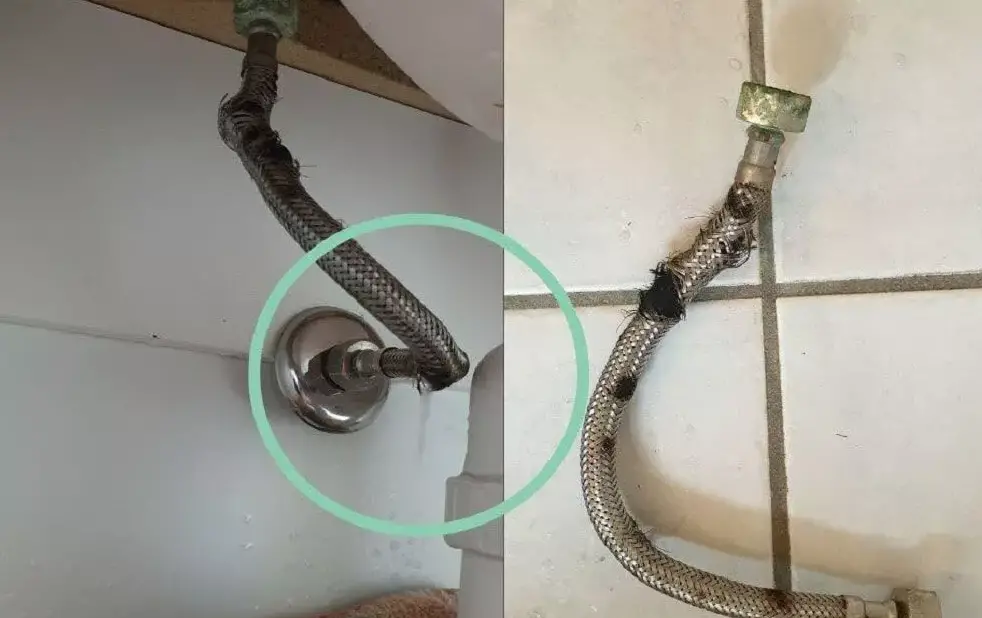
Under your sink, there are a few potential culprits that could be causing water buildup without an obvious leak.
Observe
The first step is to take a good look around the area and make sure there are no obvious signs of a leak. Check for any visible cracks or holes in the pipes, sink, and faucet fixtures. If you can’t see any visible signs of damage, it’s likely there’s an issue with the drain system.
Run A Tissue Over All Surfaces
The first step in fixing a water under sink situation is to run a damp tissue over all surfaces underneath your sink. This will help you detect any wet spots that may be leaking from the plumbing pipes or fittings. If there are any wet spots, it’s important to identify where they’re coming from so that you can properly fix the issue.
The Faucet Stress Test
If you’ve ruled out a leaky pipe and there’s still water under the sink, it may be time to do a faucet stress test. Start by turning on all of the faucets in your home, including both hot and cold water lines. If possible, open nearby fixtures as well (e.g., shower or tub). Once the water is flowing, wait a few minutes to see if any of the fixtures start leaking. If they do, then you’ve found the culprit!
The Flow Test
Have you already checked the obvious areas of a leak? If not, start by checking your shut-off valves, replacing any faulty hoses and inspecting the drain line. Once you have eliminated all these potential sources of water, it is time to perform a flow test. This test will help confirm whether or not there is a problem with the water supply line leading to your sink. [1]
The Basin Test
The basin test is a simple way to check if your faucet is leaking. All you need to do is take a shallow bowl and place it underneath the sink on the floor. After leaving it for about 15 minutes, check the water level in the bowl. If the water has risen then there’s likely a leak somewhere in your plumbing system and you’ll need to do some further investigation.
Establishing A Baseline
Before attempting to fix a water leak under the sink, it’s important to establish a baseline. Start by ensuring that the water supply is shut off and all valves are closed. Check for any apparent signs of leaking from around the pipes, including visible drips or discoloration on the floor. Once you’ve established that there isn’t an obvious source of water, you’ll need to take steps to identify the cause. [2]
Common Kinds Of Leaks And Fixing
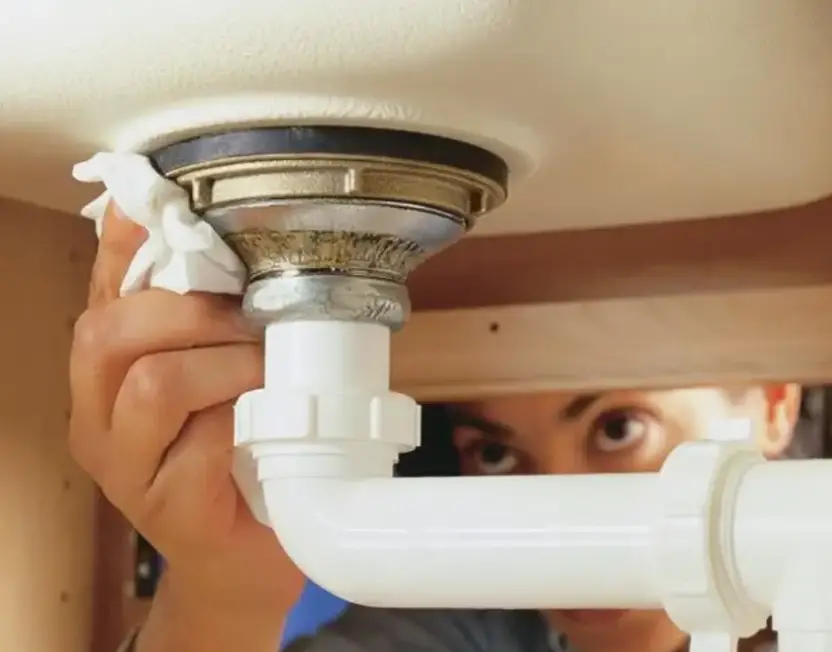
If you detect water under your sink but no obvious leak, there are a few common types of leaks that can occur. Here’s a look at the most probable causes:
Drain Leak
Drain leaks are one of the most common types of leak when it comes to sinks. This type of leak happens at the point where the drain pipe enters the sink, or where the sink and drain meet. If you notice water pooling around this connection, then you might have a drain leak. To fix this issue, you’ll need to tighten the connections with a pipe wrench or call a plumber to do it for you.
Water Supply Leak
If you have noticed water developing around the sink, but no active leaking is present, then the issue may actually be stemming from the water supply. This might be due to a pipe that has not been installed correctly or one that is beginning to fail. Either way, this can cause a great deal of damage if not taken care of quickly.
Faucet Leak
If you have water under the sink and there is no visible leak, it may be coming from the faucet. Inspect all areas around the faucet, including underneath to look for signs of a leak. If you find one, check your faucet’s manual or consult a professional plumber to replace any worn out parts.
Leaky P-Trap

The most common cause of water gathering under the sink, with no visible leak, is a leaking P-Trap. The P-trap is the curved section of drain pipe that connects the sink to the main drain line. It’s job is to hold water in order to create a seal which prevents sewer gasses from entering your home. A P-trap can become corroded and develop small cracks, or the seal between mating parts may break down, allowing water to seep out. [3]
Damaged Washers
If you have water under your sink but no leak, it could be because of a damaged washer. A washer is a rubber ring that’s used to create a waterproof seal between two metal surfaces. It’s important for preventing leaks, so if the washer has become worn out or cracked over time, it won’t be able to keep the water out.
Broken Reverse Osmosis System
Water Under Sink, But No Leak: Troubleshooting and Solutions
Discovering water under the sink without a visible leak can be perplexing. Here’s a comparison of possible reasons and solutions to fix the issue.
| Possible Cause | Solution | Preventive Measures |
|---|---|---|
| Condensation | Use insulation or pipe sleeves to prevent cold water lines from sweating. Consider a dehumidifier for high humidity areas. | Maintain consistent room temperature and ventilation to reduce condensation. |
| Slow Drip or Seepage | Inspect all plumbing connections and fittings. Tighten any loose connections and replace damaged pipes, O-rings, or seals. | Regularly check for drips, and address any leaks promptly to prevent damage. |
| Blocked Drain Line | Clear blockages in the drain line using a drain snake or pipe cleaner. Ensure proper drainage of the sink and dishwasher. | Avoid disposing of grease or food scraps down the sink to prevent future clogs. |
| Faulty Faucet or Fixture | Inspect and repair or replace any malfunctioning faucets or fixtures that may be causing water to accumulate beneath the sink. | Regularly maintain and service faucets to prevent future issues. |
| Roof or Wall Leak | Check for water intrusion from the roof or walls. Repair any exterior leaks and address water damage inside the house. | Maintain the integrity of the building structure to prevent external water entry. |
Explanation of the table:
This table provides a comparison of possible causes of water under the sink without a visible leak and suggests corresponding solutions. Preventive measures are also provided to help homeowners address the issue effectively and prevent its recurrence. By identifying the root cause and taking appropriate action, you can resolve this common household problem.
FAQ
Why is it wet under my sink?
The most likely cause of a wet spot under your sink is a leak. This can be caused by a damaged pipe, loose connection, or improper installation of the plumbing fixtures. If the area around your sink has been exposed to moisture over time, it may also be due to condensation buildup.
How do you fix a slow leak under the sink?
When you have a slow leak under the sink, it can be difficult to identify the source of the problem. In this situation, it is important to inspect all possible points where water could be entering your home or leaking out. The most common causes of a slow leak in your sink are: defective supply lines and fittings; ill-fitted washers; corroded valve stems; faulty shutoff valves, and cracks in the sink basin.
How do you tell if it’s a leak or condensation?
A leak under the sink is a common occurrence, but if you don’t find a visible source of water and there’s no obvious leak, it might be condensation. Condensation can form when warm air from your hot water tank or pipes rises and comes into contact with cold surfaces in your home, such as metal piping beneath the sink.
How do I know if my pipes are leaking or condensation?
If there is water pooling under your sink, it could be caused by a leaky pipe or condensation. To determine which is the case, check for other signs of leaking such as wet spots on walls and cabinets, musty odors, and mold growth. If you find evidence of a leak, then it’s time to take action.
Can your water leak little by little?
If you notice that your water supply under the sink is leaking, yet there is no visible source of a leak, it can be caused by several different issues. The most common cause of a small but consistent leak involves the faucet valves or drain pipes. The first step in fixing this type of issue is to locate the source of the leak.
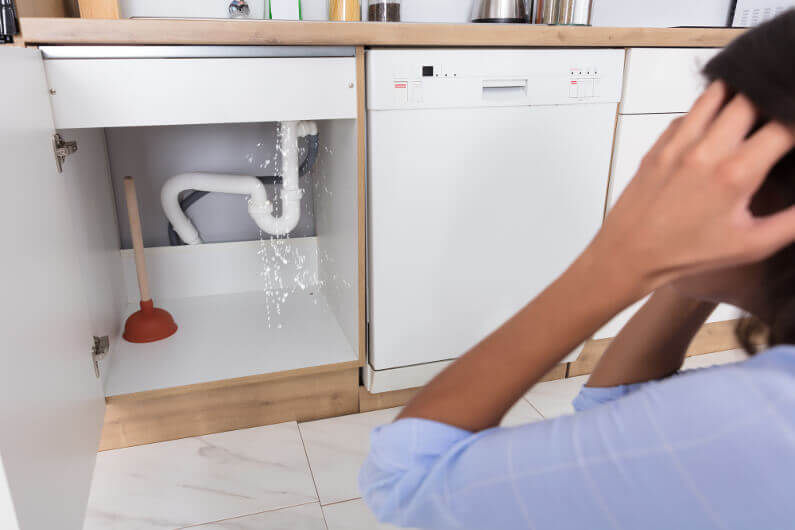
What’s the easiest way to find a leak?
The easiest way to find a leak under the sink is with a simple visual inspection. Look closely at the pipes and other components that make up your faucet and drain setup. If you see dampness, discoloration or water pooled in any of these areas, then you likely have a leak somewhere nearby.
Should I worry about condensation?
Condensation can be a cause of water under your sink, but it is usually not the culprit in this situation.
Condensation occurs when warm air containing moisture comes into contact with and condenses on cold surfaces such as sinks and pipes. This typically happens during periods of high humidity or temperature changes. If you suspect that condensation is to blame for the water gathering under your sink, try using a dehumidifier to reduce the amount of moisture in the air.
How do plumbers find leaks in pipes?
Plumbers use a variety of methods to locate and repair leaks in pipes. One common method is called “tapping” or “listening.” This involves using a special tool that listens for the sound of escaping water beneath the sink, which will usually indicate the presence of a leak. The plumber may also use an infrared camera to detect minute temperature differences in the area around the pipe, which could be indicative of a leak.
Additionally, they may apply dye packs or smoke tests to narrow down possible areas where there might be a leak. Once a suspected area has been identified, it can often be repaired by tightening fittings, replacing washers and seals, wrapping parts with Teflon tape, or even replacing sections of pipe. Another method used to find and repair leaks is video inspection, which involves using a camera that can be inserted into the pipe system to search for areas where water might be escaping. The camera may also detect blockages or other issues that are causing the water pressure to drop and leading to a lack of water flow. This method is often more accurate than tapping or listening, as it allows the plumber to see exactly what’s going on inside the pipes, rather than relying on sound alone. Once the cause of the leak has been identified, it can usually be repaired relatively quickly and easily with minimal disruption.
Can a pipe leak fix itself?
In most cases, no, a pipe leak will not fix itself. While it is possible for some issues to be resolved with time and patience, most plumbing problems will require professional assistance from a qualified plumber.
However, there are certain steps that you can take in order to identify the source of a water leak under the sink and understand how best to address it. One way to determine if the issue is caused by a leaking pipe is to examine the area around the pipes. If you notice any wet spots or dampness around your pipes then this could indicate a problem inside the wall or behind your cabinets where you may not be able to see it directly.
Additionally, if there is an abnormally high water bill then this could also indicate a leak in your system.
Depending on the severity, this may include replacing old or worn pipes and fittings, installing new valves and faucets, and tightening connections. Additionally, if there are any clogs present then they should be cleared out with a snake or auger in order to prevent further damage. In most cases, these repairs can be completed without major plumbing work; however, if the issue is more serious then it may require professional repair services from a reliable plumber who specializes in fixing water leaks under sinks.
How do I stop condensation under my sink pipes?
Condensation under the sink is a common phenomenon that can cause water to build up and lead to discoloration and mold. Fortunately, there are several ways to prevent condensation and reduce moisture in these areas. The most important way to stop condensation is by insulating your pipes. This will help keep the temperature of your pipes consistent and prevent hot and cold air from mixing. Additionally, you can buy a dehumidifier to reduce the amount of moisture in the air surrounding your pipes. If you have exposed pipes, consider wrapping them with insulation tape or pipe wrap to further keep them warm. Lastly, make sure you are regularly cleaning your sink area and running the fan when you’re using hot water to help keep the air moving. Taking these steps will help you stop condensation under your sink and reduce the risk of water damage or mold growth. If you have already experienced water buildup from condensation, you may need to take additional steps to completely dry out the area. Check for any visible leaks or cracks in the pipes and look for hidden water damage, then repair any issues you find.
What might be the cause of water under the sink when there’s no visible leak?
Water under the sink with no visible leak can be caused by condensation, a dripping faucet, a loose connection, or a drain issue. Identifying the specific cause is essential for effective troubleshooting.
How can I determine if the water under the sink is due to condensation or an actual leak?
To determine whether the water is from condensation or a leak, wipe the area dry and then observe. If the moisture returns and is consistent with the surrounding environment, it’s likely condensation. However, if it continues to accumulate or worsen, there may be a leak.
What steps can I take to fix condensation-related moisture under the sink?
To fix condensation-related moisture under the sink, you can insulate the pipes with foam pipe insulation, ensure proper ventilation in the cabinet, and use a dehumidifier if necessary. These measures help reduce condensation and keep the area dry.
What should I do if there’s water under the sink, but I can’t identify the source of the issue?
If you can’t identify the source of the water under the sink, it’s advisable to consult a professional plumber. They can perform a thorough inspection to pinpoint the problem and recommend the appropriate solution to fix the issue.
Is it important to address water accumulation under the sink, even if it’s not a major leak?
Yes, it’s important to address water accumulation under the sink, even if it’s not a major leak. Ongoing moisture can lead to mold, mildew, and structural damage over time. Identifying and addressing the issue early can prevent more significant problems in the future.
Conclusion
The most common cause of water under the sink, but no actual leak is a blocked drain trap. Fortunately, this problem can usually be easily fixed using basic tools and supplies. The first step is to locate the blockage, which could either be due to a foreign object stuck in the pipe or a build-up of soap or dirt particles. Once identified, the blockage can be removed using a drain snake, plunger or chemical cleaner. If these methods fail, then it may be necessary to remove the trap and clean it out more thoroughly. After that, all that’s left is to put everything back together and enjoy a leak-free sink!
References
- https://www.superterry.com/why-is-water-leaking-under-my-sink/
- https://legacyplumbing.net/blog/how-to-find-a-leak-under-the-kitchen-sink/
- https://homeguides.sfgate.com/dry-up-water-under-sink-23138.html
- https://plumbertip.com/leak-under-kitchen-sink/





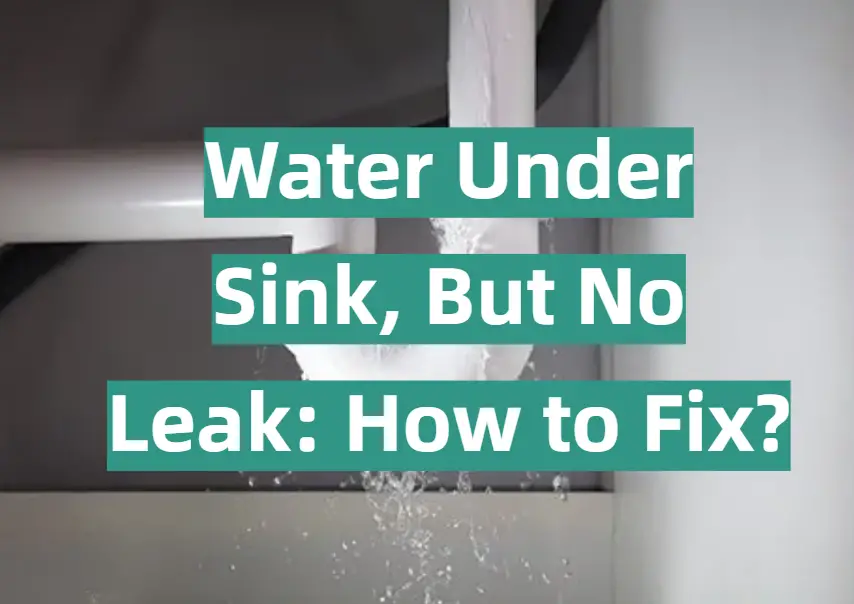





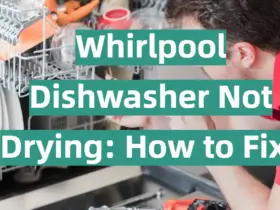
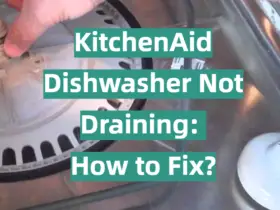
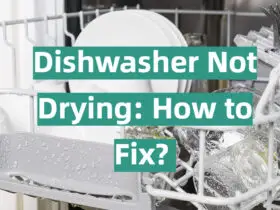
I had the same issue of moisture under my bathroom sink, but couldn’t find any leak. Turns out it was due to condensation from the pipes under the sink. I wrapped some insulation around the pipes and haven’t had the moisture issue since. Make sure to check for condensation as the cause if you have water but no visible leak.
This happened to me in my kitchen – water collecting under the sink but no dripping or leaking pipe. It ended up being high humidity levels in the house causing condensation to build up under the sink. I run a dehumidifier now which keeps the humidity down and prevents water from collecting. Look at overall humidity levels as a potential cause.
I found water under my kitchen sink and thought for sure there must be a leak somewhere, but couldn’t find one after checking all the pipes. It ended up being condensation forming on the underside of the sink from temperature differences. I put insulation under the sink which helped reduce the condensation. Check for condensation before you tear things apart looking for a leak!
I had the same frustrating issue of finding water under my bathroom sink but no signs of any leaks. After monitoring it for a while, I realized it was condensation forming on the pipes below the sink when I would take hot showers. Getting some insulation around the pipes prevented the condensation build up and solved the problem.
If you’re finding water under your sink but no leaks, make sure to check for high humidity in the room. I discovered the humidity from my showers was causing condensation to form under my bathroom sink. A dehumidifier cleared it up. Humidity is a common source of “water with no leak”.
I found water collecting under my kitchen sink and was stumped because all the pipes were dry. Turns out the condensation from the sink drain was dripping down and collecting underneath. I wrapped insulation around the drain pipe which fixed the issue. Check sink drains as a source of condensation.
I had moisture collecting under my kitchen sink despite no leaks. The issue ended up being high humidity levels in the house. I run a dehumidifier now which keeps the humidity under control and prevents water from collecting under the sink. Humidity can mimic a leak.
If you have water collecting under your sink but no visible leaks, make sure to check for condensation. I thought my pipes must be leaking, but it turned out to be condensation from the sink and drain drippings collecting underneath. Some insulation wrapped on the pipes fixed it.
I discovered water under my bathroom sink and was puzzled because I couldn’t find a leak. It ended up being condensation forming on the underside of the sink basin from steam and humidity after I would shower. A dehumidifier prevents the condensation from happening now.
I had an issue with finding moisture under my kitchen sink even though none of the pipes were leaking. The culprit ended up being condensation forming on the pipes below the sink due to temperature differences. Putting some insulation around the pipes prevented further condensation issues.
If you have water or moisture collecting under your bathroom sink but no leak, make sure to check for condensation. In my case, steam and humidity after showering was leading to condensation under the sink which mimicked a leak. Running a fan during/after showering prevented it.
I kept finding water under my kitchen sink and was baffled because the pipes weren’t leaking. I realized it was actually condensation dripping down from the underside of the sink basin itself due to temperature differences. Putting insulation under the sink solved the issue for me. Check for condensation!